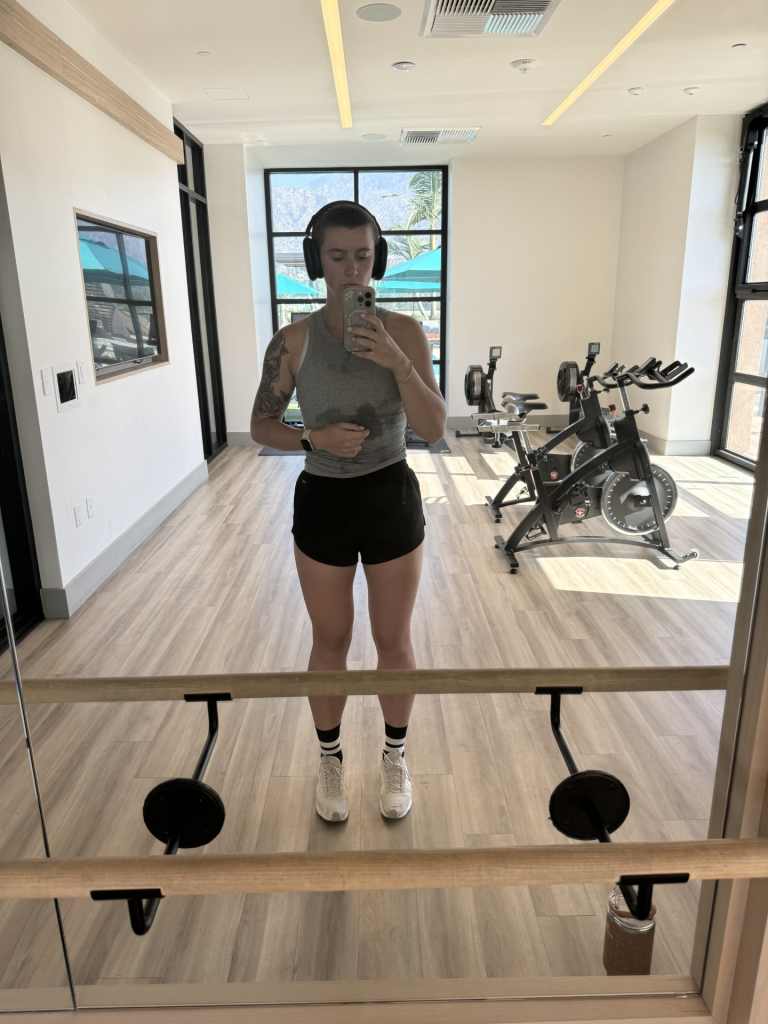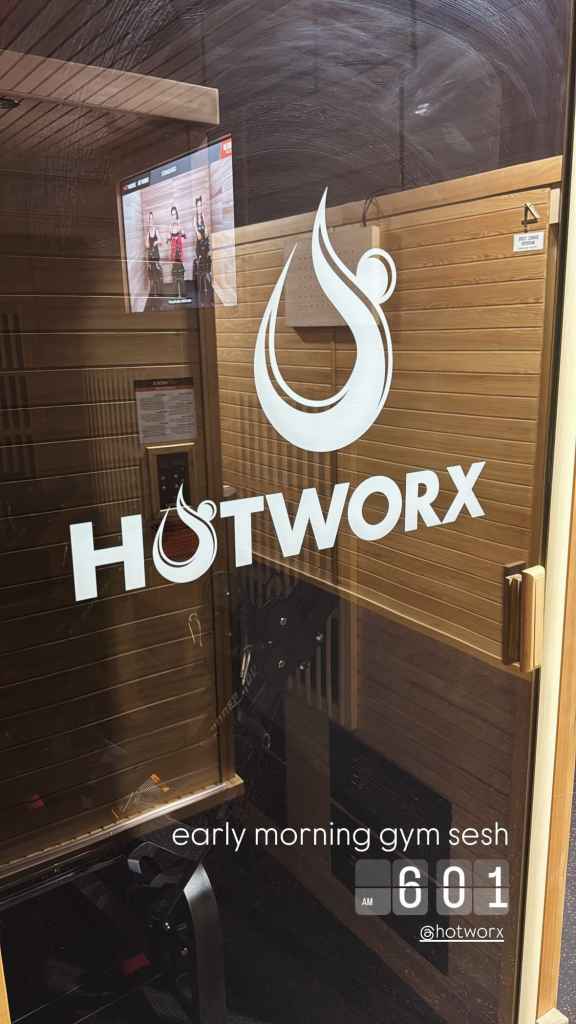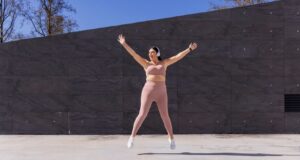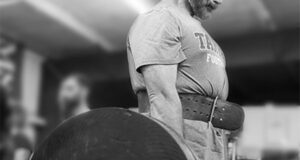Sweating is a natural part of any good workout, but when you produce sweat, does it help you lose weight? Some believe that the more you sweat, the more fat you burn—but the truth is a bit more complex. While sweating itself doesn’t directly burn fat, it’s a sign your muscles are actively using energy to generate heat.
Additionally, sweating can boost your body’s metabolic processes, help flush “false fat” (water weight) and even aid in detoxification. Whether you’re working out in a gym, breaking a sweat at home or simply powering through a brisk walk, understanding how sweat impacts your fitness journey can help you make the most of your workouts and achieve your weight loss goals.
Does sweating help you lose weight? What to know
Sweating is a natural response to physical exertion and heat. And while it doesn’t directly cause fat loss, sweating can play an important role in your fitness journey. Understanding how sweating contributes to weight loss and knowing how to measure progress can help you optimize your health goals.
Benefits of sweating for weight loss
Sweating helps regulate body temperature during exercise, but it also offers several indirect benefits for weight loss. Sweating signals that your body is actively burning calories and using energy.
And a study in the International Journal of Environmental Research and Public Health found that exercising in higher temperatures, which induces more sweat, increases calorie burn by raising the heart rate and metabolic processes. This thermogenic effect allows the body to continue burning calories even after a workout is finished, known as excess post-exercise oxygen consumption, or the “afterburn effect.”
Additionally, sweating promotes detoxification. Research in the Galen Medicine Journal highlights that sweating can rid the body of waste products and toxins, which may enhance overall health and metabolic efficiency. Healthy metabolic function is essential for sustained weight management.
How to sweat more for weight loss
You don’t need a high-end gym membership or expensive equipment to break a sweat while exercising at home. Here’s how to do it:
1. Use a space heater
A small, portable space heater can help elevate the temperature in your home workout area.. You can purchase a space heater for about $20 online. Infrared heaters can be found online for as little as $40 and gently warm the body and promote deeper muscle relaxation.
Safety tip: Ensure proper ventilation and keep the heater at a safe distance to avoid overheating or accidents. Also, monitor the room’s temperature to maintain a comfortable heat level.
2. Layer your clothing
Wearing multiple layers helps trap body heat, mimicking the effects of a heated environment. This approach is cost-effective and doesn’t require additional equipment, so dig your college sweatshirt out of your dresser, throw on a long-sleeved shirt underneath and get sweating. You can start with layers and remove them as you warm up to prevent overheating.
3. Optimize small spaces
Use a small section of your living room or bedroom for workouts—you don’t need a ton of space to get the full impact! Foldable yoga mats, resistance bands and small dumbbells are easy to store, don’t require much space and can be sourced online or at second-hand gym equipment stores for just a few dollars. The best part? By working out in a smaller space, it’ll be easier to get the temperature up and start sweating.
4. Keep a water bottle handy
Increased heat means more sweat, so keep a water bottle nearby to stay hydrated. After your workout, use a fan or open a window to help gradually bring your body temperature back to normal.
Measuring your progress
When focusing on sweating for weight loss, it’s essential to monitor the right metrics. Since sweat is primarily water, immediate weight loss seen after a sweaty workout is largely due to fluid loss. Rehydrating is crucial to avoid dehydration and help you stay energized.
Long-term progress should be measured by more sustainable indicators such as:
- Body composition: Changes in fat and muscle mass is an indicator of weight loss. You can measure your progress with a smart scale such as Withings Body Smart Scale.
- Physical performance: Improvements in endurance, strength or overall fitness levels indicate the body is adapting and becoming more efficient.
- Energy levels and recovery: Enhanced stamina during workouts and quicker recovery times are signs of improved metabolic health and fitness.
Key signs to look for
While sweating is a positive sign of effort toward weight loss, excessive or insufficient sweating can indicate other issues. Signs to watch for include:
- Excessive sweating: This may suggest overtraining or the need to drink more water while exercising.
- Minimal sweating: This could indicate dehydration or issues with the body’s ability to regulate temperature.
What about infrared workouts?
If you’re interested in taking your workout to the next level, an infrared gym offers targeted benefits that go beyond weight loss. According to research published in the YMJ medical journal, infrared heat stimulates collagen production and circulation, which can help ease joint pain and boost skin elasticity.
Women who are managing conditions like arthritis or hormonal fluctuations often find that infrared workouts provide relief from aches and inflammation. And because the heat penetrates more deeply than traditional saunas, the workout is both effective and gentle on the body.
Would you try an infrared workout?
Stephen Paul Smith, founder of HOTWORX, a 24-hour infrared workout studio that has locations nationwide, explains that these sessions provide “3D Training,” which includes infrared heat, isometric holds and high-intensity interval training (HIIT). This combination, Smith tells FIRST for Women exclusively, allows for a more intense workout in less time. “The heat makes it easier for muscles to perform,” he shares, “meaning you can push yourself without risking strain.”
I tried an infrared workout: My honest review
I recently tried my first infrared workout at HOTWORX and felt its effects immediately. As a gym rat myself, the idea of getting a workout in but only having to dedicate a short amount of time was intriguing to me (and I’ve never been afraid of getting my sweat on, as you can see below).

The studio’s compact, heated spaces intensify the workout experience, and within minutes, I was sweating like never before. Although initially surprising, the warmth felt natural, and by the end of the session, my muscles were pleasantly worked rather than fatigued.
For my session, I tackled the 15-minute cycling workout, and the infrared heat added a unique intensity that traditional gyms don’t provide. Smith suggested starting with short sessions, especially for beginners, and emphasized the importance of hydration. “Infrared heat amplifies the workout experience,” he noted, “but you need to stay hydrated to avoid dizziness and maximize benefits.”

The post-workout glow was a bonus. The sweat didn’t feel like the typical post-gym stickiness; instead, it felt cleansing. To top it off, I spent another 30 minutes stretching in the sauna, which was as relaxing as it was challenging.
An additional benefit I wasn’t expecting? Infrared heat has been linked to enhanced skin health, and after my HOTWORX session, my skin did look refreshed. The experience left me intrigued about integrating infrared workouts into my weekly routine. You can get a closer look at my workout at HOTWORX below:
@_loumarshall No workout has gotten my heart rate up, my sweat on, and my recovery all taken care of like #HOTWORX – to say this #fitness option has converted me is an understatement. My full take will be published tomorrow, 11/9, on firstforwomen.com #gym #hiit #hotworkout #gymgirlsoftiktok
Safety considerations: Is infrared right for you?
Like any workout, infrared exercise has safety considerations and you should consult your doctor to make sure it’s right for you. It may not be suitable for those with cardiovascular issues, dizziness or extreme heat sensitivity.
Acclimating to heat takes time, so new users should gradually increase their exposure to infrared exercise. Hydration is also critical; with the body working harder to regulate temperature, it’s essential to replenish fluids regularly to avoid dehydration.




